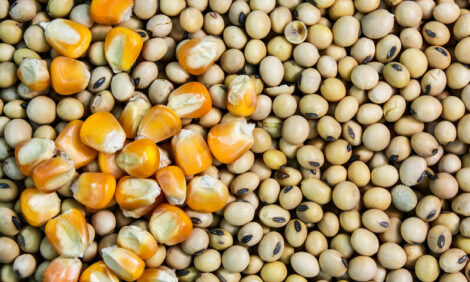



Meat Price Bubble in Wake of US Flood
US - A week on from the disastrous Midwest floods in the United States and corn and soybean prices have already soared, but now consumers have another issue to worry about as the knock-on affects pass to the meat, egg and dairy industry.In the latest bout of food inflation, beef, pork, poultry and even eggs, cheese and milk are expected to get more expensive as livestock owners go out of business or are forced to slaughter more cattle, hogs, turkeys and chickens to cope with rocketing costs for corn-based animal feed.
The floods engulfed an estimated 2 million or more acres of corn and soybean fields in Iowa, Indiana, Illinois and other key growing states, sending world grain prices skyward on fears of a substantially smaller corn crop. The government will give a partial idea of how many corn acres were lost before the end of the month, but experts say the trickle-down effect could be more dramatic later this year, affecting everything from Thanksgiving turkeys to Christmas hams.
* "There's definitely liquidation of livestock happening" |
|
Rod Brenneman, president and chief executive of Seaboard Foods
|
Rod Brenneman, president and chief executive of Seaboard Foods, a pork supplier in Sawnee Mission, Kansas. that produces 4 million hogs a year, said high corn costs were already forcing producers in his industry to cut back on the number of animals they raise.
"There's definitely liquidation of livestock happening," and that will cause meat prices to rise later this year and into 2009, said Brenneman, who is also the vice chairman of the American Meat Institute.
Brenneman's cost for feeding a single hog has shot up $30 in the past year because of record-high prices for corn and soybeans, the main ingredients in animal feed. Passing that increase on to consumers would tack an extra 15 cents per pound onto a pork chop.
It's a similar story for US beef producers, who now spend a whopping 60-70 percent of their production costs on animal feed and are seeing that number rise daily as corn prices hover near an unprecedented $8 a bushel, up from about $4 a year ago.
"This is not sustainable. The cattle industry is going to have to get smaller," said James Herring, president and CEO of Amarillo, Texas-based Friona Industries, which buys 20 million bushels of corn each year to feed 550,000 cattle.
Corn's prices were already rising before the floods, driven up 80 percent over the past year as developing countries scramble for grains to feed people and livestock. US production of ethanol, an alternative fuel that can be made with corn, has also pushed prices higher, prompting livestock owners to lobby Washington to roll back ethanol mandates.
Before the floods, corn farmers were enjoying record profits selling the grain to feed animals and for use in cereals and as a sweetener in soda and candy. But a sharply smaller corn crop could wipe out those gains.
In Iowa, the No. 1 US corn grower, floods inundated about 9 percent of corn crops, representing about 1.2 million acres - almost 1.5 percent of the country's anticipated harvest.
In Indiana, another 9 percent of corn and soybean crops were flooded, potentially costing farmers up to $840 million in lost earnings, Indiana Agriculture Director Andy Miller said.
Floodwaters also tossed farm equipment, sprayed cornfields with debris and silt and sucked away large chunks of topsoil. For livestock owners and meat producers, the damage may be felt long after the corn grows back.






